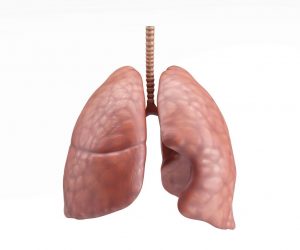An article by Associate Prof Dr Ernest Poh Mau Ern, Consultant Respiratory Physician at University Malaya Specialist Centre.
Cough, just like pain, is a protective mechanism to prevent aspiration. It is designed to keep foreign particles out of our airways. As such, it is not necessarily a bad thing because it is there to protect us.
We cough when something gets into our airways, thereby irritating it. When it becomes very persistent, it then interferes with our lives. Some feel embarrassed because it attracts unwanted attention. Others have difficulty sleeping at night as the cough frequently wakes them up.
A RECENT COUGH
The commonest form of cough is caused by a respiratory tract infection, usually viral in nature. The virus hijacks this natural defence mechanism to propagate itself through the population.
Beyond three weeks and up to eight weeks, a persistent cough is termed a sub-acute cough.
One of the most common cause of a sub-acute cough is a condition that has been given many names in the past including post-viral cough and post-infectious persistent cough.
This lingering cough usually follows a viral respiratory tract infection, such as a common cold or flu. There are many hypothesis behind this condition although the reasons behind this lingering cough is not fully known. One reason is that the receptors that are responsible for stimulating the cough during the respiratory tract infection are up-regulated by respiratory tract infection and continue to stimulate even after the virus has disappeared (also termed cough receptor hyper-responsiveness).
It has also been thought to be due to the extensive inflammation and disruption of upper or lower airway epithelial integrity. This is often associated with the accumulation of an excessive amount of mucus and the cough mechanism is thereby a reflex to clear the secretions from the airway.
The next condition leading to a sub-acute cough is upper airway cough syndrome, a fancier name for something more commonly known as post-nasal drip.
This occurs when one experiences excessive mucus accumulating at the back of their nose and dripping down to the throat. This is more common in an individual who is a little more sensitive to allergens such as dust, haze or smoke in which the term rhino-sinusitis or allergic rhinitis is used. As a result of mucus dripping down the back of the throat, one often feels irritation at the back of the throat and coughs in an attempt to get rid of the mucus or clear the itch. Common symptoms described include having a blocked or stuffy nose and sneezing which is worst in the early morning.
Gastro-esophageal reflux disease (GERD) is the next cause for a sub-acute cough and this, in turn could be a complication of vigorous coughing. Classically, the cough is worst when the patient has had a meal or upon lying down after a heavy meal. They may also complain of a burning sensation in the centre of their chest (also known as heartburn) and a bitter taste behind their tongue. One may also have had a history of gastric attacks and reflux in the past.
Amongst the elderly, a persistent cough can result from aspiration of food or drinks. This is more frequently seen in elderly patients who have some other medical conditions affecting their swallowing ability such as a previous stroke or Parkinson’s disease. A choking history may not necessary be obvious as aspiration of even a small amount of fluid may result in this. Prolonged aspiration can in turn lead to infection, known as aspiration pneumonia. Elderly patients are also at risk of GERD and this may occur concurrently.
The final condition underlying a sub-acute cough which could have been initially labelled as a post-viral cough or post-infectious persistent cough is a very well-known condition (yet very often misunderstood disease) named asthma.
Asthma is a disease with many variations hence why it is most commonly misunderstood. It affects almost 300 million individuals worldwide. It is a disease involving chronic inflammation of the airways as a hypersensitive response to different allergens. It is usually characterized by symptoms such as an intermittent cough, wheeze, shortness of breath or chest tightness. Not all symptoms may occur concurrently or be present at the same time. These symptoms are usually worst at night or upon waking and are often triggered by exercise, laughter, allergens or cold air. Cough maybe the predominant feature of which this is known as “cough-variant asthma”.
There are certain features in the history that points towards asthma such as a family history of asthma as there is a genetic or hereditary component to it. While most patients develop asthma in their childhood, it can also first manifest when the patient first becomes pregnant.
About 25% of patients may develop asthma much later in life, usually in their 50s of which this is known as adult-onset asthma. In the elderly population however, asthma is commonly under-diagnosed or over-diagnosed. Asthma may be under-diagnosed due to poor perception, an assumption that breathlessness is normal in old age, lack of fitness, or reduced activity. Asthma may also be over-diagnosed in the elderly through confusion with shortness of breath due to heart failure. If there is a history of smoking or biomass fuel exposure, the other condition that we should be careful not to be confused with adult-onset asthma would be chronic obstructive pulmonary disease (COPD).
A LONGER COUGH
If a cough persists for beyond eight weeks, the term chronic cough is used and this could be caused by one of the following conditions. The list is not exhaustive and some of the causes of a sub-acute cough described above can of course lead to a chronic cough if not managed properly.
The first condition is Chronic Obstructive Pulmonary Disease (COPD). These are usually seen in patients with a strong history of cigarette smoking. Typically, cigarette smokers usually have a chronic cough which maybe dry or productive and they will not necessary go to the doctors for a consult. They have grown so used to the cough and the habit that months and years goes by without them needing to visit the doctors for this. The more common symptoms they would present to the doctors are for increasing breathlessness. These, unlike asthma, are present all the time and are made worst during exertion. It is only when they start to feel limited in their daily activities or when they have had a bad flare of breathlessness would they then consider kicking the habit of smoking altogether and seek medical attention.
Patients with COPD may also present with a cough that is more than usual, associated with purulent phlegm or even blood in their phlegm. Being high risk patients, one should be careful not to miss out a diagnosis of pneumonia or lung cancer in such patients.
Lung cancer, however, usually present rather late in the disease as there are rarely any symptoms to indicate the presence of early disease. When the tumour has grown to a certain size and blocks the main function of the lungs, only then symptoms such as a cough will appear. By then, the cancer will have moved to an advanced stage. Despite this, it is of utmost importance to bear in mind that cancer remains one important diagnosis when dealing with a persistent cough.
Aside from COPD and lung cancer, another condition that can result in a persistent cough especially in this part of the world is tuberculosis. Tuberculosis (TB) is a disease caused by a bacteria called Mycobacterium tuberculosis. The bacteria usually attack the lungs, but they can also damage other parts of the body, resulting in irreversible damage and scarring. It is a transmissible disease and spreads through the air when a person with pulmonary TB coughs, sneezes, or talks. The number of cases in Malaysia each year approximates 26000, an alarming figure. The death rate due to TB alone in 2018 is 6.6 per 100,000 people. The World Health Organisation (WHO) estimates there were nearly 10 million new TB cases recorded worldwide in 2017, leading to 1.3 million deaths.
In this regard, it is important for patients to receive early treatment to avoid complications and death from tuberculosis and at the same time, prevent transmission to others. Among the main symptoms of TB are persistent cough, fever, night sweats, lack of appetite, weight loss and coughing up blood. Not all symptoms may be present and many patients are caught off-guard when they are told to have pulmonary TB. However, there are some who think that this may be ‘common cough’ that will be ‘cured’ with a week’s dose of antibiotics. It is misconceptions like these which still allows the disease to spread and infect other individuals. TB is a curable disease if TB medication is taken daily for at least six months.
There are many other respiratory conditions such as bronchiectasis, pulmonary fibrosis (scarring) and pleural effusion (fluid in the pleural cavity) which can result in a persistent cough, all of which are beyond the scope of the article. In short, one would be wise to seek an expert opinion on this rather than allow a cough to linger on. After all, it is said that love and a cough cannot be hid.






